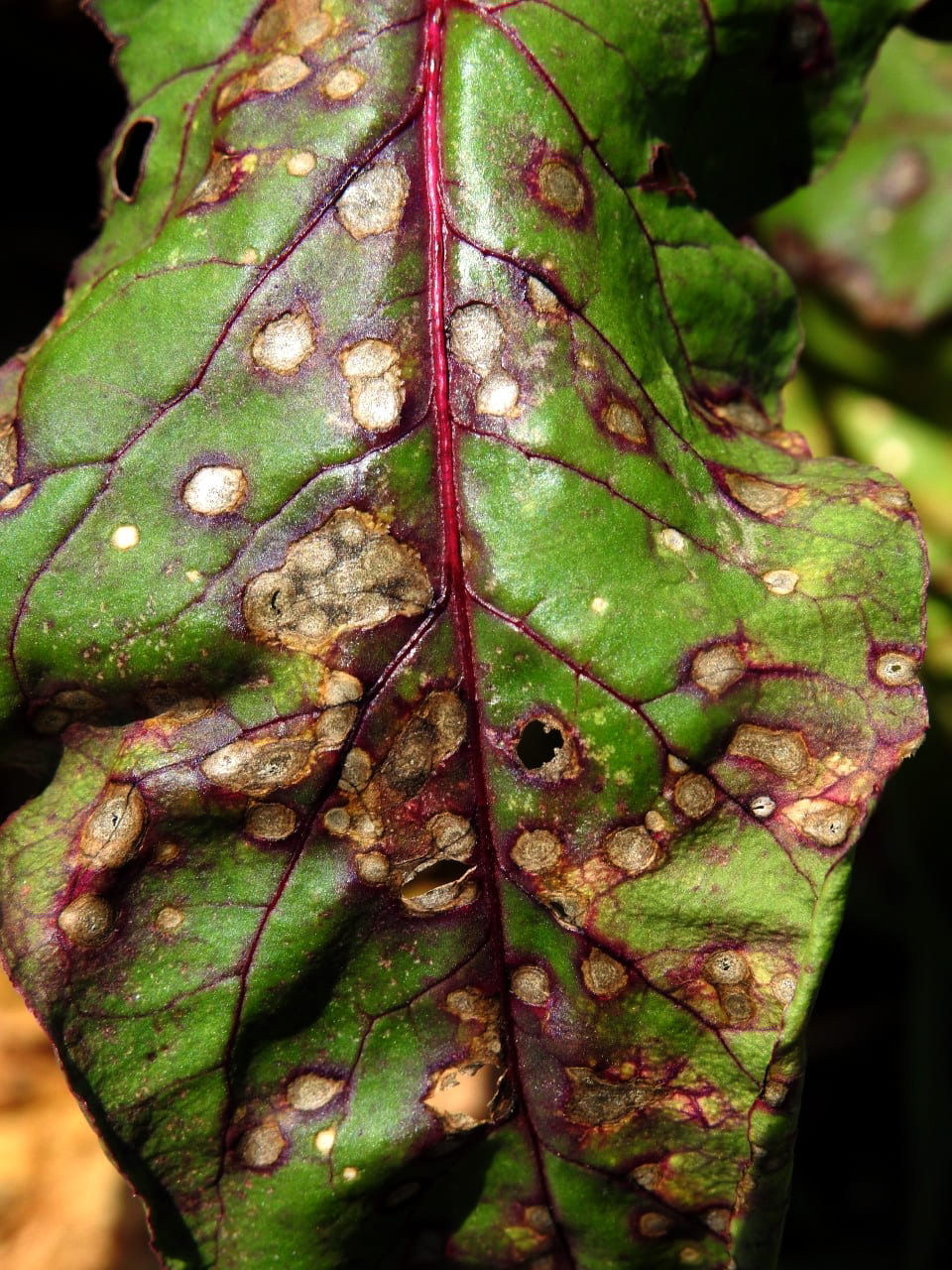
Chard Pox
Cercospora Beticola
Pathogène :
Fungus
Type:
Risque:
HIGH
Cercosporosis




Descrição da doença
Cercospora beticola is a phytopathogenic fungus that causes the disease known as leaf spot of beet or chard. This pathogen is especially harmful to sugar beet crops, as well as other plants in the chenopodiaceae family, such as chard. It is characterized by its ability to survive in crop residues and infected seeds, as well as its rapid dispersal through spores transported by wind and water.
Descrição do patógeno
The disease caused by Cercospora beticola in chard manifests itself as circular or angular Taches on the leaves, which are initially light brown and then turn white to gray with a reddish edge. As the disease progresses, these Taches can merge, causing wilting and necrosis of the leaves, significantly affecting yield and crop quality.
TEMPERATURA E UMIDADE
20ºC - 25ºC
80% - 95%
CAMINHOS DE TRANSMISSÃO</span
Infected plants, the spread of spores by wind, contaminated irrigation water, the use of infected seeds and the activity of insect vectors.
CONTROL
Tratamento químico
• AZOXISTROBIN 25% [SC] P/V
• CUPRIC HYDROXIDE 13.6% (EXPR. IN CU) + COPPER OXYCHLORIDE 13.6% (EXPR. IN CU) [SC] P/V
Tratamento biológico
• CUPRIC HYDROXIDE 13.6% (EXPR. IN CU) + COPPER OXYCHLORIDE 13.6% (EXPR. IN CU) [SC] P/V
Traitements biologiques
• BACILLUS SUBTILIS (STRAIN QST 713) 1.34% [SC] P/V
Recomendações
To prevent and control leaf spot caused by Cercospora beticola, it is essential to implement integrated pest management practices. This includes rotating crops to reduce spore buildup in the soil, removing infected crop residue, using resistant varieties where possible, and controlling weeds to improve air circulation and reduce humidity. In addition, the use of specific fungicides can be effective in controlling the disease, although they must be applied preventively and following the dosage recommendations to avoid pathogen resistance.
TRAITEMENTS
Remèdes maison
There are no home treatments
Alliés naturels
Traitements chimiques
There are no treatments for this disease. Treatments are directed at the insect vectors that transmit it. See insect treatments.
RECOMMANDATIONS
- Check the back of the leaves frequently, especially in dry weather.
- Spray water on the leaves to increase humidity and prevent them from settling.
- Keep plants healthy with good watering and adequate light.
- If you see cobwebs or damage, clean the leaves with a damp cloth or pressurized water.
- Use potassium soap or neem oil every few days until they disappear.
Plantes répulsives
Rosemary, Dill, Coriander
PRODUITS RECOMMANDÉS
*Os tratamentos recomendados ainda são recomendações de acordo com os bancos de dados de autoridades e em nenhum momento substituem as diretrizes estabelecidas de acordo com a legislação de cada país
*Les produits présentés sont des recommandations et ne sont pas nos propres produits. En tant qu'associés Amazon, nous gagnons des revenus grâce aux achats de produits recommandés.





















